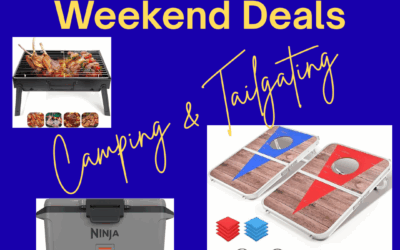- Bring approach shoes with sticky soles for stable, comfortable access to outdoor crags.
- Choose climbing shoes that fit your style—flatter for beginners, aggressive for performance.
- Always wear a well-fitting helmet to protect against falls and falling rock.
- Pack essential gear: harness, ropes, belay device, locking carabiners, and proper rope care.
- Include comfort and safety items: chalk/chalk bag/brush, guidebook, backpack, first aid, water.
So you want to hit the crag, but you’re unsure of what rock climbing gear to bring with you.
We understand. Whether you’re heading to the climbing gym for the first time this week or are ready to go outside, there is some climbing gear you’ll need. From safety equipment to things to make your day much more comfortable, we’ve put together a comprehensive rock climbing gear checklist for you. Remember as you’re going through this list that there is no beta (climbers speak for information) that you can get that will be better than someone who can show you the steps in person. So, find a buddy who has been about before to show you the ropes. But, make sure you have all your things ready for when it is time to head outside.
Approach Shoes
How many pairs of shoes does someone need in their rock climbing gear repertoire? Well, if you’re just hitting the gym, one pair is fine. But, if you’re heading out to do some outdoor climbing, you’ll want to invest in some solid approach shoes as well. These shoes are similar to tennis shoes, hiking shoes, or sneakers, except they’re made with sticky rubber soles. This will help you grip the rocks as you approach your climbing crag for the day.
With extra grippy soles, these can double as spectacular hiking shoes. If there is a particularly rocky section or even a light rock scramble involved, a solid pair of approach shoes will keep you stable when moving around. So, look for brands like La Sportiva and Five Ten to give you great options when it comes to approach shoes. Keep in mind though that these shoes should fit like normal sneakers, so stick with your normal size. There is no need to make them snug like your climbing shoes.
Climbing Shoes
No matter where you’re climbing, you’ll want to invest in some climbing shoes that fit you, your climbing style, and your foot. Depending on your intensity level, you might want a more aggressive, or ‘curved’ shoe. These will be a little more uncomfortable though. So, if you’re just starting out, we’d recommend going with a flatter sole that isn’t quite so rigid.
Sometimes, rock climbers like to have two different pairs of climbing shoes. One aggressive pair for when they’re really pushing themselves, and one more comfortable, and a looser pair for when they’re warming up or just working out. Climbing shoes come in so many options as well. From velcro and lace-up designs to simple slip-on options, you can easily shop around to figure out what works for you. We highly recommend trying a few on in person and even taking them for a climb if possible. This will give you the most confidence when buying a pair of climbing shoes to add to your rock climbing gear checklist.
Helmet
You might see photos from time to time of climbers not wearing helmets. While this is a personal choice some make, we highly recommend having a great helmet on your climbing gear checklist, but more importantly on your head. You never know when you might miss a move you thought you had and go for a swing. At that moment, you’ll be incredibly glad you had a helmet. A just as likely situation is a climber above you loosens up a rock and sends it careening down towards you. Either way, a great rock climbing helmet is essential to staying safe and in one piece.
When picking out your helmet, you’ll want to have it fit your head really well. When fully strapped on, it shouldn’t be able to move around at all, even if you shake your head quite a bit. In addition, think about what climate you’ll be climbing in. How much ventilation do you need? If you’re heading to the desert, consider a helmet with quite a bit. But, if you’re going to do some winter climbing, you might want to have a helmet big enough to sneak a baseball cap or even a warm beanie underneath. Either way, a solid rock climbing helmet is an essential piece of rock climbing gear.
Chalk Bag, Brush, & Chalk
There’s no denying that a hard day of rock climbing is a spectacular work out. But, when you’re working out, you get sweaty. It’s all part of how our bodies were designed. When that sweat gets mixed with needing to grip rock, though, things get tricky. So, climbers use chalk to soak up their sweat so they can grip the rock easier. A chalk bag will keep your chalk close by as you scale the mountain. They vary in shapes, sizes, and colors. Some are a little bit bigger with a larger opening, which can be nice for ease of use. However, remember that every extra ounce you add to yourself is one you have to carry to the top of the climb. In addition, make sure you get a chalk bag that cinches closed really well so that your chalk doesn’t blow away or spill out.
When choosing chalk, it’s nice to have both powder and a chalk ball. This way, you can get control how much you’re getting when you reach in. Additionally, you might notice that popular rock climbing routes often have chalk build upon them. While this can be handy to see which handholds people used, sometimes too much chalk accumulates. In this case, you’ll need a brush to brush off the chalk. You can get an actual rock brush or just slip an old toothbrush in your bag. Either way, you’ll be glad to have each of these items in your rock climbing gear bag.
Harness
If you’re doing anything more than simple bouldering outside or at the gym, you’re going to need a harness. Rock climbing harnesses are made to keep you safe when you’re high in the sky. Why they come with a variety of different options, all harnesses will have a few basics. To start, two leg loops and a waist loop. These should fit snugly on you. When fully cinched down, you should be able to fit two fingers in between the harness and your body. But, when you go to twist your fingers, they should cross over themselves. This is the perfect tightness for your harness, so measure your size accordingly.
On top of that, you might see that some harnesses have more cushion than others. Depending on how long the routes you’re climbing, you might want a little more cushion. But, the more cushion there is, the warmer the harness will be, so factor that in as well. In addition, there are different gear loops on the harness. If you’re just top roping or indoor climbing, you don’t need many. However, if you’re trad climbing, you’ll often be carrying a lot of gear. In this case, you’ll want to be very familiar with all your gear loops and make sure you can easily access them. So, consider all these things when adding a harness to your rock climbing gear collection.
Ropes
You can easily understand why ropes are essential to your rock climbing gear checklist! They are one of the most important pieces of soft gear. Keeping your ropes in good health is also an integral part of getting started rock climbing. They come in a variety of sizes, shapes, colors, and stretch options. Again, as you begin to get a feel for what routes you’ll be doing, you can buy ropes accordingly. As far as rope care goes, you need to keep your rope out of the dirt and mud. Little particles of rock can slowly work their way into the core of the rope, wearing it down over time. So, on top of the rope you choose, bring along a rope bag or a simple tarp to help keep your rope off the dirt. This will keep you safer and extend the life of your purchase.
Belay Device & Carabiners
I’m sure we’d all love to be Superman and be able to hold people up with one hand. Well, with the belay device technology these days, you can. The simplest belay device available today is an ATC. When paired with a locking carabiner, this combination allows you to lock off your climber as well as take up slack when needed. When they’re all done, you can lower them with this as well. However, there is no automatic lock on an ATC, so you need to be extra careful when using this type of belay device.
Another option is called a grigri. While they are more expensive, they are worth it. You take up slack and lock off your climber very similarly to an ATC. However, a grigri also has an assisted-braking feature. This pinches the rope to when the climber falls to help the belayer catch them. They will not lower until the belayer uses the handle to gradually release the rope. This belay device option allows you greater control of the rope and climber. However, it is easy to get lazy with a grigri. So, of course, make sure you are attentive and building trust with your climbing partner at all time, no matter what belay device you use. So, while a belay device is essential to your rock climbing gear, a great climbing partner is even better.
The Local Guidebook
Yosemite. The Adirondacks. Colorado. The Red. Joshua Tree. Moab. The Gunks. There are so many rock climbing destinations out there, how will you ever choose where to go? Well, having the guidebook for where you’re heading is essential to a great day out at the crag. While you can look up plenty of information ahead of time, when you’re staring up at the cliff, it’s handy to know exactly what route you’re going on. You don’t want to start up what you think is a 5.7 to find out it’s a 5.9 that you can’t do. Guidebooks will have pictures, beta, and a wealth of knowledge on the best practices in the area you’re in. So, make sure to grab one at the local gear store if you’re heading outside to rock climb.
Climbing Backpack
This list of the ultimate rock climbing gear is getting lengthy. While you might not need everything on this list, you’ll probably need something to carry it all in. There are some stellar rope bags in the world which have special protection for your heavy gear and easy spot to attach a helmet and other things. By investing in a climbing specific backpack, your rock climbing gear will be safer and your backpack will last much longer. Make sure the waist strap fits you well to keep the heavy gear on your hips, rather than your back. As you look into the variety of climbing backpacks available, you’ll see the wide variety of options to choose from.
For the Trad Climbers Among Us: A “Rack”
If you’re ready to jump into the trad climbing world, that’s awesome. Building your own anchors with nuts, hexes, and cams can be incredibly rewarding. On top of that, this type of climbing has an even smaller footprint than sport climbing by keeping bolts out of the walls. We simply love that. However, building a great climbing rack is essential to having the right gear when you need it on a climb. So, start investing in a variety of sizes of nuts, hexes, and cams. Make sure to look in a guidebook to see the recommended gear to bring on any given climb.
How do you carry all this rock climbing gear, you ask? Well, a sling will be quite handy for that. Have at least one sling around your shoulders to clip this all onto. But, as you are mentored by someone who has done this before. You’ll quickly realize you need a few more slings to set up belay stations and repels if you’re going into the multi-pitch world. As you’re following the leader setting these items, you’ll want a nut tool as well. This will give you leverage when taking out the gear as you follow the leader. Lastly, add quickdraws to your rock climbing gear checklist. These will let you attach the rope to the anchors you build and are essential to trad climbing. All of this together is a simple trad rock climbing gear checklist.
Bouldering Pad
So you’re not ready to get too crazy with the ropes and gear rack, and that’s okay. Some of the most fun rock climbing around are boulders. In this case, you get to climb unhindered by a harness or rope. But, you still want to be safe. So, put a boulder pad under where you’re climbing, and make sure to have a buddy spotting you. Bouldering pads are essentially glorified mattresses. However, they’ll have backpack straps attached to them so you can hike them into wherever you decide to play around. So, if you’re not ready to commit to the big outdoor climbs, toss a bouldering pad on to your rock climbing gear checklist to have fun without the great commitment yet.
Personal Comfort & Protection
Finally, there are some simple things you can grab from around your house that will make your day rock climbing that much better. Food, water, and chapstick are essentials when it comes to staying happy and healthy outside or in when you’re exerting yourself. In addition, having a small first aid kit and tape will help when blisters inevitably start forming. But, to keep you more comfortable, grab an old pair of work gloves that have plenty of grip to use as belay gloves. You don’t want to get rope burn after holding on to a rope all day long. These will also keep your hands from turning black when using a new rope.
Lastly, bring sunglasses if you’re climbing outside. You’ll be looking up quite a bit, and you don’t want the blinding sun to get in the way of keeping your climber safe. If you have a little extra money to spare, grab a pair of belay glasses as well. These will keep your neck from hurting after hours of looking up at your climber. Either way, having eye protection will be more than worth it.
All in all, there is a variety of things to consider when putting together your rock climbing gear essentials.
Rock climbing is undeniably an exhilarating and wonderful sport. This being said, there is high risk involved even if you do know what you’re doing. To ensure your safety, make sure to learn from a certified guide or someone who has been climbing for quite a while. Second to that, invest in good, high-quality gear, as it is literally holding your life. We are so excited that you’re ready to dive into the climbing world, let us know what questions you have as you expand your rock climbing gear collection.
Related Article: The 5 Best Chalk Bags of 2018: Your Shopping Guide
















